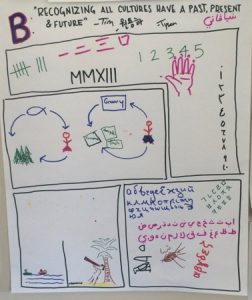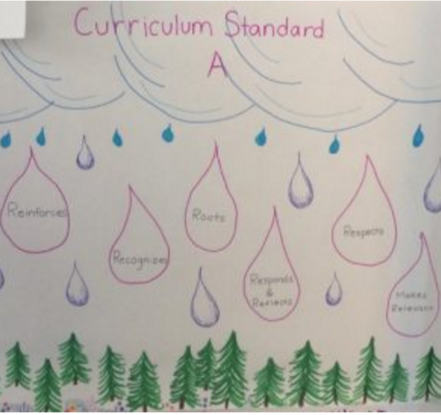Culturally Responsive Curriculum Standard B: A culturally-responsive curriculum recognizes cultural knowledge as part of a living and constantly adapting system that is grounded in the past, but continues to grow through the present and into the future.
1. recognizes the contemporary validity of much of the traditional cultural knowledge, values and beliefs, and grounds students learning in the principles and practices associated with that knowledge;
2. provides students with an understanding of the dynamics of cultural systems as they change over time, and as they are impacted by external forces;
Our group (Tyson, Tim, Chris, & myself) related this cultural standard to many disciplines outside of our own chosen path, which was predominantly Social Studies. Utilizing traditional knowledge in the classroom could be done in a multitude of ways. First we thought of studying flora and fauna and how we still utilize “traditional” knowledge of those uses today. My idea for a lesson plan within Social studies was studying traditional indigenous impact on the environment and synthesizing practices that we could use today to minimize long term damages. There are many different ways one can approach this standard.




